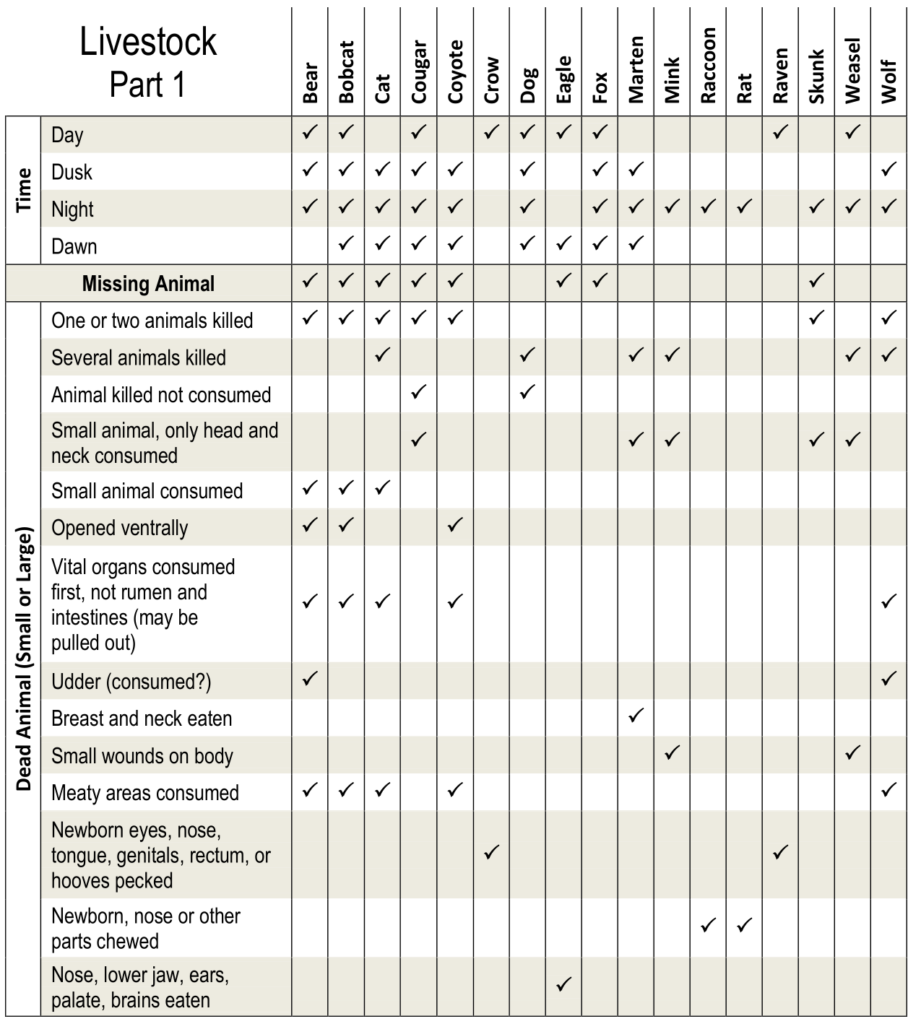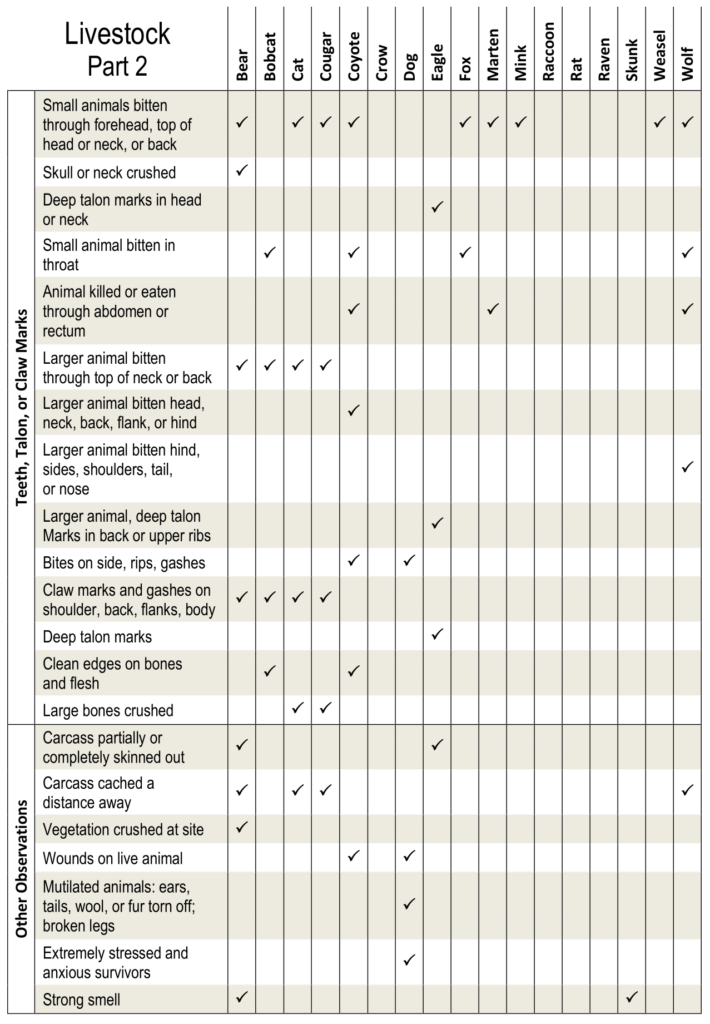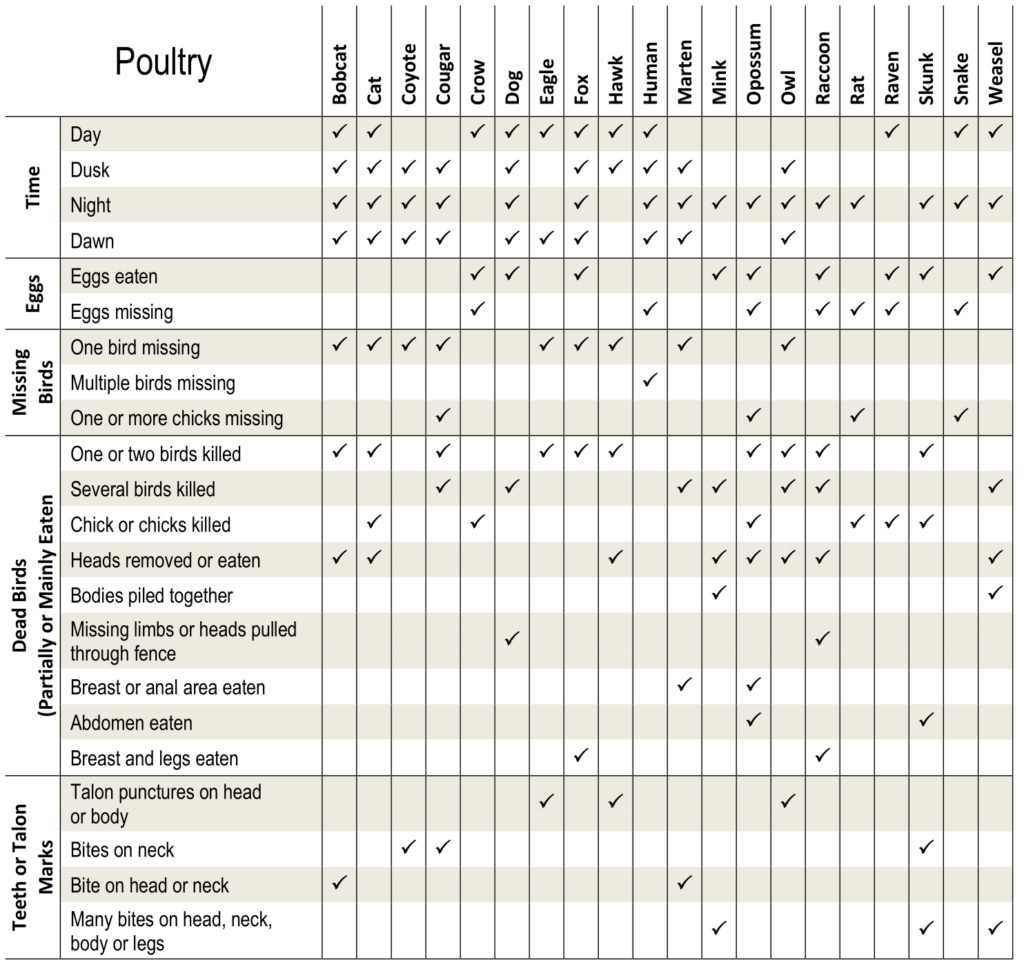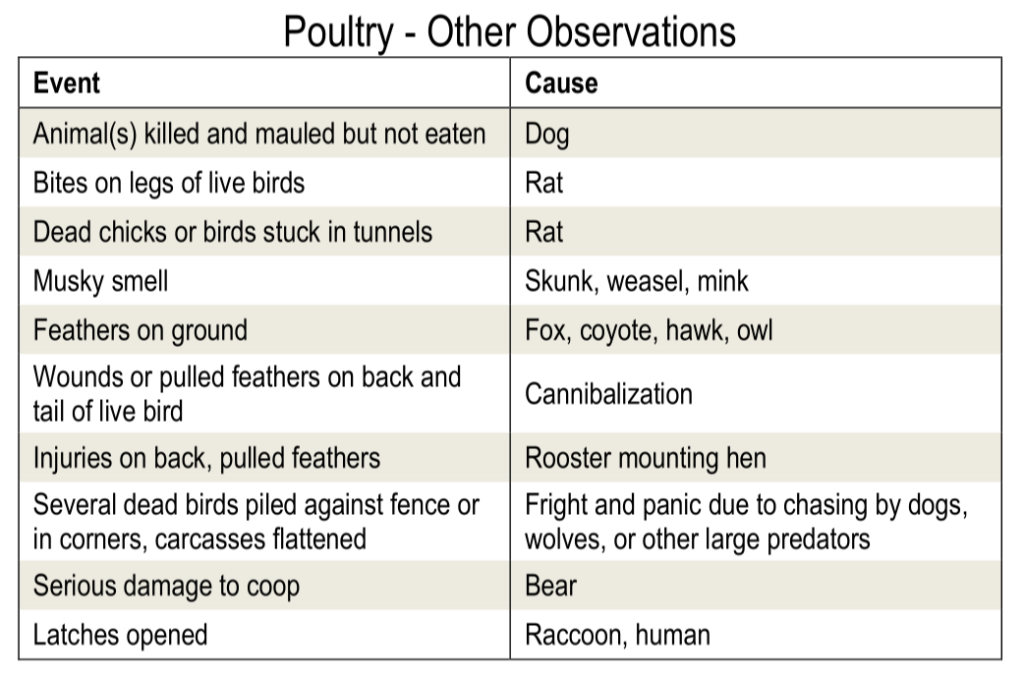AWPP Informational Resources
Livestock Guardian Animal Webinars by Expert Jan Dohner
Livestock Guardian Animal Overview – Llamas, Donkeys and Dogs (1 of 3)
Troubleshooting Livestock Guardian Dog Behaviors (2 of 3)
A Deeper Dive into Livestock Guardian Dogs (Part 3 of 3)
AWPP Guide to Wildlife Coexistence
This guide contains information on wildlife deterrence resources including links to several webinars about livestock guardian dogs, and solutions for deterring beavers, birds of prey, and small predators.
Damage ID Tables (below)
Use these tables to identify which predators may be causing your loss or damage. Small predators can kill, carry away, and eat only very small livestock. Predators may be active during non-normal times.
Livestock Predator ID Table


Poultry Predator ID Table


Assessing Your Risk of Conflict with Wildlife
Consider the following in terms of your farm operation’s location, size, setting, natural environment, terrain and how they relate to your husbandry practices.
- It is more difficult to protect livestock over large areas
- Livestock are more vulnerable the further they are removed from human presence
- Forested areas and vegetated streams provide cover and movement corridors for wildlife
- Land with a mosaic of field and forests with high deer populations are likely to attract predators
- Rolling or steel terrain provides cover for wildlife; flat, open terrain makes it difficult for carnivores to approach livestock undected
- Unsecured hay or other crop storage will attract deer and elk and their predators
- Afterbirth and sick, injured or dead livestock will attract carnivores
- While coyotes are the most common predator that livestock producers face in Benton County, domestic dogs can also kill livestock- and they often ‘surplus kill’ or slaughter livestock or poultry in large numbers, not necessarily for food.
Was This An Attack?
Sometimes scavengers and predators are blamed when they are just eating what was killed by something else or that died of natural causes. Getting to the carcass quickly can help you identify the cause of death. Consider using a trail camera to help you determine what predators are nearby and may pose a threat to your livestock.
Some questions to ask when determining cause of death:
- What time of day did the attack likely occur?
- Are there signs of a struggle like torn hair, wool, or feathers; blood spatter; drag marks; or broken vegetation?
- Are your other animals acting nervous, scattered or vocal?
- Are there bite marks? If so, where are they located and what size are they? You may need to clip hair or wool to look for puncture marks. If the damage is to a living animal there will be bruising.
- Is there a lot of blood? A death from natural causes will not show much blood.
- Was the animal stillborn? Newborn animals may have membranes covering their hooves. Pink lungs indicate the animal was breathing before death, while stillborn animals have dark-colored lungs that will not float in water. Milk in the stomach indicates the newborn nursed before death.
